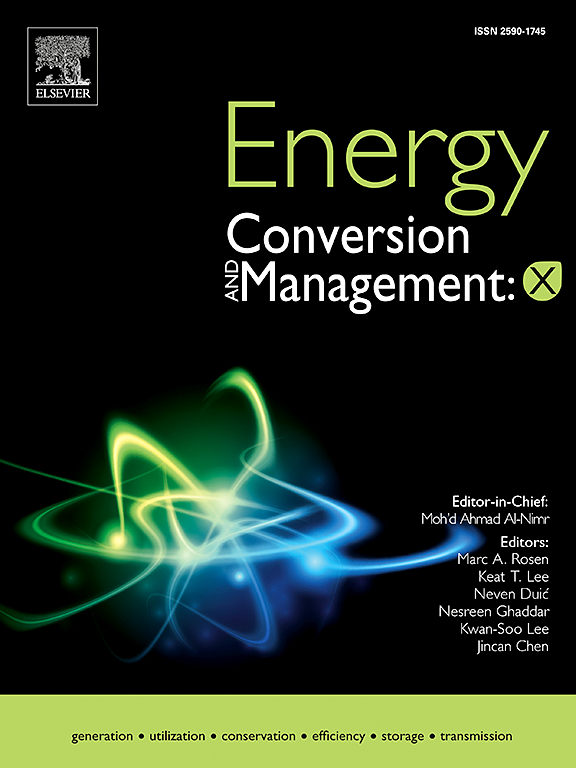Long term impact of lignin accumulation in cattle manure digesters on biomass activity and chemical post treatment
IF 9.9
1区 工程技术
Q1 ENERGY & FUELS
引用次数: 0
Abstract
Animal manures, which are typically rich in lignocellulosic content, pose both significant environmental impacts and opportunities for renewable energy. Lignin is particularly resistant to anaerobic degradation. In this work, the effect of lignin accumulation on anaerobic biomass activity and its potential degradation by chemical post treatment was evaluated. Anaerobic digestion of lignin-rich cattle manure (CM) in a 12-L continuously stirred tank reactor for 224 days (d) under mesophilic conditions, at an average organic loading rate of 2.9 g COD/L/d, and sludge retention time (SRT) of 30 d achieved average steady-state COD, lignin, cellulose, and hemi-cellulose removal efficiencies of 41 %, 11.9 %, 54.5 %, and 55.4 %, respectively. Fluorescence excitation-emission matrix parallel factor (EEM-PARAFAC) analysis for the cattle manure and digestate indicate the presence of aromatic compounds, potentially a lignin hydrolysis by-products, which may be inhibitory. The application of chemical post treatment to enhance the anaerobic biodegradability of lignin-rich digested cattle manure (DCM), achieved additional biodegradability of 15%–24 %, which did not correlate with solubility. This work has demonstrated that despite the accumulation of lignin in the digestate, the activity of the acclimatized lignocellulose-degrading bacteria was enhanced, and thus post treatment technologies should be assessed not only based on their impact with respect to lignin solubilization, but also with respect to how they affect microbial activity.求助全文
约1分钟内获得全文
求助全文
来源期刊

Energy Conversion and Management
工程技术-力学
CiteScore
19.00
自引率
11.50%
发文量
1304
审稿时长
17 days
期刊介绍:
The journal Energy Conversion and Management provides a forum for publishing original contributions and comprehensive technical review articles of interdisciplinary and original research on all important energy topics.
The topics considered include energy generation, utilization, conversion, storage, transmission, conservation, management and sustainability. These topics typically involve various types of energy such as mechanical, thermal, nuclear, chemical, electromagnetic, magnetic and electric. These energy types cover all known energy resources, including renewable resources (e.g., solar, bio, hydro, wind, geothermal and ocean energy), fossil fuels and nuclear resources.
 求助内容:
求助内容: 应助结果提醒方式:
应助结果提醒方式:


